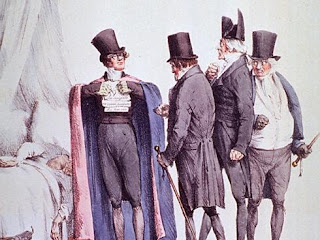What is even more appalling is that editors are skilful about when and when not to coerce authors into adding illegitimate self-citations. They have to be smart, because this practice is disfavoured. If editors of a journal are caught for coercive citation, its reputation will suffer: there's yet a chance of being excluded from the impact factor list of ISI Journal Citation Reports. Editors are on the ball in the game by applying three major tactics. First, they for the most part target those authors that are most likely to submit: Young scientists, who are easily intimidated and for whom the publication pressure is most prevalent. Second, they primarily target authors from Asian countries for whom English is not the strongest point and would likely to be easily intimidated. Third, they target papers with a small number of authors. This minimizes the risk of repute marring: The fewer people know about it, the better.
Whilhite and Fong provided a list of the nastiest offenders. The top 5 consists entirely of journals from business (marketing, accounting, finance, etc.), the discipline in which coercive citations is most prevalent.
Here’s the Top 10 ranking worst offenders:
- Journal of Business Research
- Journal of Retailing
- Marketing Science
- Journal of Banking and Finance
- Information and Management
- Applied Economics
- Academy of Management Journal
- Group and Organization Management
- Journal of Consumer Psychology
- Psychology and Marketing
It doesn’t augur well for the reputation of the journals that practice coercive citation. Nevertheless it is part of the game of managing impact factors that are critical for evaluation and marketing of journals. Wilhite and Fong gave two tangible examples how coerced citation acts:
“Recently a friend had an article accepted for publication. Two weeks after that acceptance the editor sent another letter asking the author to add citations from his journal. Specifically the editor wrote, you only use one (name of my journal) source which is unacceptable. Please add at least five more relevant-(name of my journal) sources.”
Another colleague had a similar experience at the submission stage; the editor asked her for three more citations to his journal before he would send her manuscript out for review. Note, these citation requests did not mention omitted content or shortcomings in the manuscript’s analysis; they simply asked authors to cite related articles in the editor’s journal.”
Fong suggest that academic associations should come to act:
“Without action, the situation is likely to deteriorate. (…) Academic associations could help by officially condemning the practice. Their action would raise the cost of coercion to editors and might help persuade organizations that promote impact factors to remove self-citations from those calculations, which would eliminate the coercive motive.”
While the article focuses on economics, business, sociology and psychology, the problem is likely endemic to all journals. Coercive citation can also be practiced by an individual serving as editor of a journal with the aim to boost one’s own citations. Failure to recognize this trend is likely to cause an underestimation of the breadth of practice in this topic. I recently conducted my study for an individual Professor Nelson Tansu in electrical engineering. My analysis based on tangible data is compelling and appalling. As an editor of a special issue in IEEE OSA Journal of Display Technology, Volume 9, Issue 4 (April 2013). http://ieeexplore.ieee.org/xpl/tocresult.jsp?isnumber=6481607&punumber=9425.
The special issue that feature ‘Recent advances in solid state lighting’ becomes ‘Recent advances in N. Tansu coercive citations’. Each of the papers in the Special issue was analysed and showed that all of the papers cited Tansu unnecessarily and excessively. All papers in the mentioned Special Issue have 6-10 citations to Tansu, and the authors of the papers are from China, Taiwan and Singapore where Tansu can easily intimidate and coerce citations. The only paper that managed to do without coercive citation is by a well-known authority in InGaN LED. Read about my full analysis in my last post or here http://www.slideshare.net/malirohwani/coercive-citation
I feel like to say we should stop using citation volume, h index, impact factor and innovate. H index and Impact factor is like a self-fulfilling prophecy that tends to transform the academia in a competition game among scholar and journals. One may expect this kind of behavior by editors of journals that desperately want to be recognized as a top-tier. One could also be cynical about the real contribution of editors in journals, but the fact that citation coercion is a normative behavior for multiple titles in these fields may say something about how academics in these fields perceive the role of scholarship. This corruption also takes the form of citing articles one never read, let alone used in coming up with ideas. This is one of the worst sins one can commit in American academic circles. In sciences where multi-author articles are the norm, corruption means big names pushing their way into position as one of the authors, often without doing much of the work or coming up with the key ideas.



No comments:
Post a Comment